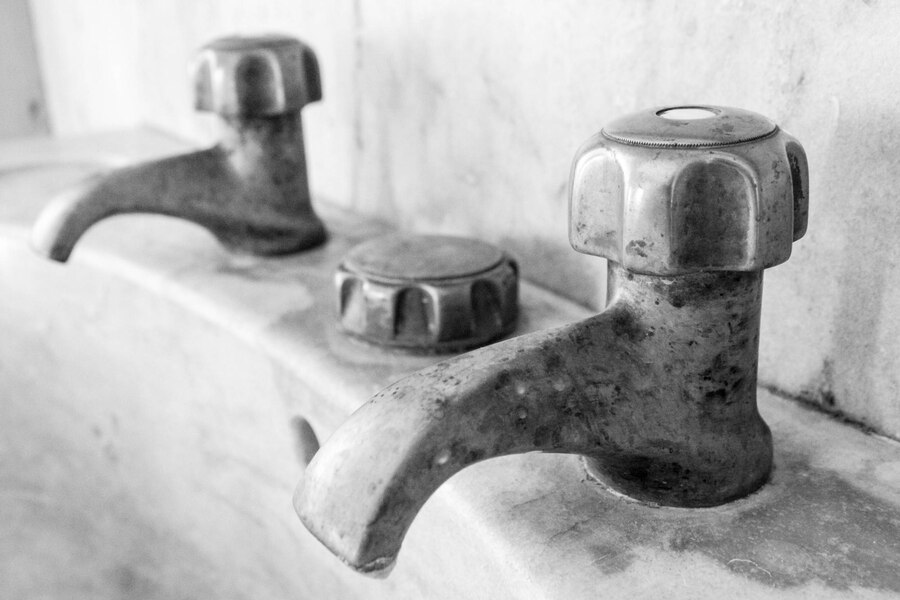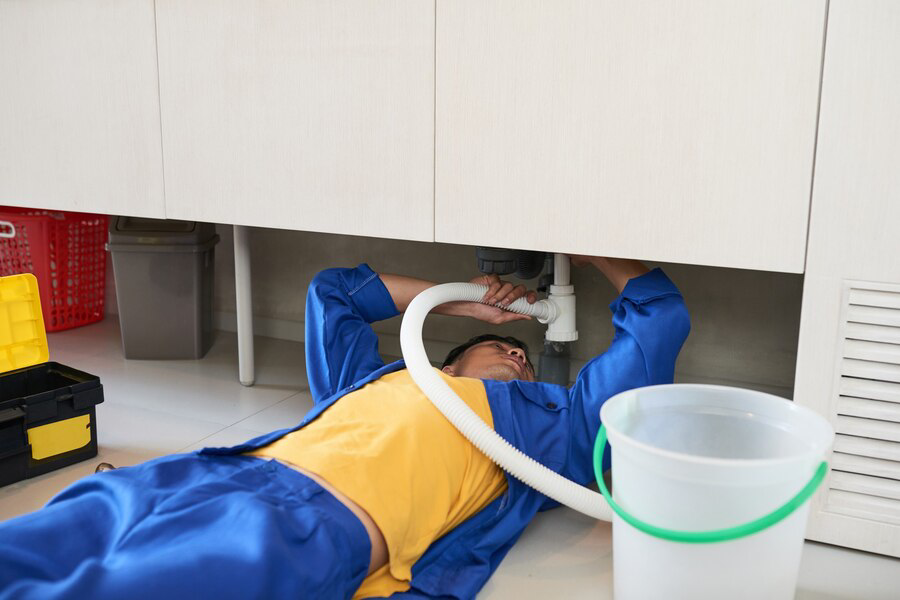Behind the walls and beneath the floors of many homes lies a hidden network of aging plumbing pipes, quietly serving their purpose day in and day out. Yet, what many homeowners may not realize is that these pipes have a lifespan – one that, when exceeded, can lead to a host of problems. From leaks and water damage to health hazards, the truth about old plumbing pipes is far from pristine. In this blog post, we delve into the dirty truth about old plumbing pipes, shedding light on the signs that indicate it’s time for an upgrade. Whether your home is decades old or relatively new, understanding the warning signals of deteriorating pipes is essential for maintaining the integrity of your plumbing system and safeguarding your family’s health and home. So, let’s roll up our sleeves and uncover the telltale signs that it’s time to bid farewell to those aging pipes and usher in a new era of reliability and safety.
Why Old Plumbing Pipes Could Be Harming Your Health
In the realm of home hazards, there’s one silent culprit that often goes unnoticed: old plumbing pipes. While they may seem innocuous, these aging conduits can pose significant risks to both your health and the integrity of your home. From lead contamination to microbial growth, the potential dangers lurking within outdated plumbing systems are cause for concern. In this article, we’ll delve into the reasons why old plumbing pipes could be harming your health, and what steps you can take to mitigate these risks.

- The Threat of Lead: One of the most notorious issues associated with old plumbing pipes is the presence of lead. Lead was a common material used in plumbing systems until its ban in the late 20th century due to its harmful health effects. However, many older homes still have lead pipes or lead solder in their plumbing infrastructure. Over time, these pipes can corrode, leaching lead into the water supply. Even low levels of lead exposure can lead to serious health problems, particularly in children and pregnant women. Symptoms of lead poisoning include developmental delays, learning difficulties, and neurological issues. Testing your water for lead and replacing any lead-containing pipes is essential for safeguarding your health.
- Corrosion and Leaks: As plumbing pipes age, they become more susceptible to corrosion and leaks. This deterioration not only compromises the structural integrity of your plumbing system but also creates opportunities for contaminants to enter your water supply. Leaking pipes can introduce harmful substances such as bacteria, viruses, and chemicals into your drinking water, posing a health risk to you and your family. Additionally, water damage resulting from leaks can promote the growth of mold and mildew, further exacerbating indoor air quality issues. Regular inspection and maintenance of your plumbing system can help identify and address corrosion and leaks before they escalate into major problems.
- Microbial Growth: Stagnant water within old plumbing pipes provides an ideal breeding ground for microbial growth. Bacteria, fungi, and other microorganisms can thrive in the damp, dark environment of aging pipes, contaminating the water that flows through them. Exposure to these pathogens can lead to gastrointestinal illnesses, respiratory infections, and other health issues. Flushing your pipes regularly and ensuring proper ventilation can help prevent the buildup of microbial colonies. Additionally, installing water filters or purifiers can provide an extra layer of protection against waterborne contaminants.
- Chemical Contaminants: In addition to lead, old plumbing pipes may contain other harmful chemicals such as asbestos, copper, and polybutylene. As these materials degrade over time, they can release toxic substances into the water supply. Exposure to these chemicals through contaminated water can have serious health consequences, including cancer, organ damage, and reproductive issues. If your home has outdated plumbing pipes or fixtures, consider having them inspected by a qualified professional to assess the risk of chemical contamination. In some cases, replacing old pipes with modern, safer alternatives may be necessary to ensure the health and safety of your household.
Warning Sounds That Signal the Need for a Plumbing Overhaul
In the symphony of household sounds, the subtle murmurs and groans emanating from your plumbing system often go unnoticed. However, these seemingly innocuous noises can serve as early warning signs of underlying issues within your home’s plumbing infrastructure. By learning to listen to your pipes, you can detect potential problems before they escalate, saving you from costly repairs and inconveniences down the line.
The Language of Pipes
Your plumbing system communicates with you through a variety of sounds, each indicative of specific issues or concerns. Understanding the language of pipes can help you decipher these messages and take appropriate action. Here are some common warning sounds to listen for:
Banging or Hammering
Description: Sharp, repetitive banging noises, often heard when turning faucets on or off or when appliances like washing machines or dishwashers are in use. Cause: Water hammer, a phenomenon occurring when fast-moving water is suddenly stopped by closed valves or pipes. This can be caused by loose valves, high water pressure, or improperly secured pipes. Action: Have a plumber inspect your plumbing system to identify and rectify the underlying cause of the water hammer, which may involve installing air chambers or pressure-reducing valves.

Gurgling or Bubbling
Description: Gurgle or bubbling sounds coming from drains or toilets, particularly after flushing or draining water. Cause: Blocked or partially obstructed vents or drains, which disrupt the proper flow of air and water through the plumbing system. Action: Clear any debris or obstructions from vents and drains to restore proper airflow and prevent potential backups or drainage issues.
Hissing or Whistling
Description: High-pitched hissing or whistling noises, often heard near faucets, fixtures, or pipes. Cause: Escaping or leaking water under pressure, typically due to damaged or deteriorating seals, valves, or fittings. Action: Inspect faucets, fixtures, and visible pipes for signs of leaks or damage, and repair or replace any faulty components as needed to prevent water waste and potential water damage.
Rumbling or Vibrating
Description: Low-frequency rumbling or vibrating sounds, usually heard when water is flowing through pipes or when appliances are in use. Cause: Sediment buildup or scale accumulation within pipes, especially in older or galvanized steel pipes. Action: Consider having your plumbing system professionally flushed to remove sediment and scale buildup, improving water flow and preventing potential blockages or pipe damage.
Continuous Running Water:
Description: Persistent sound of running water when no fixtures or appliances are in use. Cause: Undetected leaks or dripping faucets, which can waste significant amounts of water and lead to water damage if left unchecked. Action: Conduct a thorough inspection of your plumbing system, including faucets, fixtures, and visible pipes, to identify and repair any leaks promptly.
Conclusion
It’s evident that the condition of old plumbing pipes can pose significant risks to both property and inhabitants. As highlighted by EZI Plumbing, based in Chain Valley Bay, NSW, Australia, recognizing the signs indicating the need for an upgrade is crucial for maintaining the safety and functionality of plumbing systems. With their contact information provided, it’s clear that addressing these issues promptly is essential to prevent potential damage and ensure the smooth operation of plumbing infrastructure. Upgrading outdated pipes not only enhances efficiency but also minimizes the likelihood of costly repairs and potential health hazards associated with deteriorating plumbing systems.

